The past few months have been an exciting time at Highland Canine Training’s location near San Antonio, TX!
For some time, Kim Cain has been offering dog training services to clients in San Antonio and the surrounding areas. As a graduate of the Master Dog Trainer program at the School for Dog Trainers, Kim is ideally placed to help dog owners fulfill their dog’s potential – whether teaching puppies their initial obedience commands, or working with dogs with severe behavioral issues.
In recent years, Kim, along with the School for Dog Trainers, had an ambition – to open a new School for Dog Trainers campus location. Earlier this year, that ambition turned from dream to reality, as the Hill Country Campus opened its doors to its first intake of new students.
The Hill Country Campus offers a range of exceptional dog trainer programs, including the 18-week Service Dog Trainer program. This program teaches prospective service dog trainers a number of important skills, from how to understand dog behavior, to socializing a service dog candidate to set them up for access, to the all-important task training that makes a substantial difference to the lives of service dog handlers.
In this Q&A session, we caught up with Kim to understand her history with dogs; her dog training philosophy; and how service dog trainer students attending the School for Dog Trainers will make a difference upon graduation.
Kim, please can you explain a little about your history with dogs growing up?
I grew up – for the most part – without dogs. My Mom wasn’t a fan of dog hair or dog smell!
As soon as I moved into my first apartment, I purchased a bed and a dog! That was all I had for quite a while. The dog was a Doberman Pinscher named Magnum (after Magnum PI!). I was fortunate enough to meet a retired K9 Police officer who taught me a lot about building trust and cooperation with your dog. I worked nights at that time, and Magnum would sleep in my car while I worked. I’d go out on my breaks and we’d play – we were rarely apart. Smart, sweet, incredible dog!
What motivated you to get into dog training?
I’ve always had big dogs, so they had to be well behaved. It was never a “chore” to teach them, or take care of them. I loved the “ah-ha” moments when they first show comprehension of what you are trying to teach. Dog training is something I had always wanted to do, but I put family and money before doing what brings me joy!
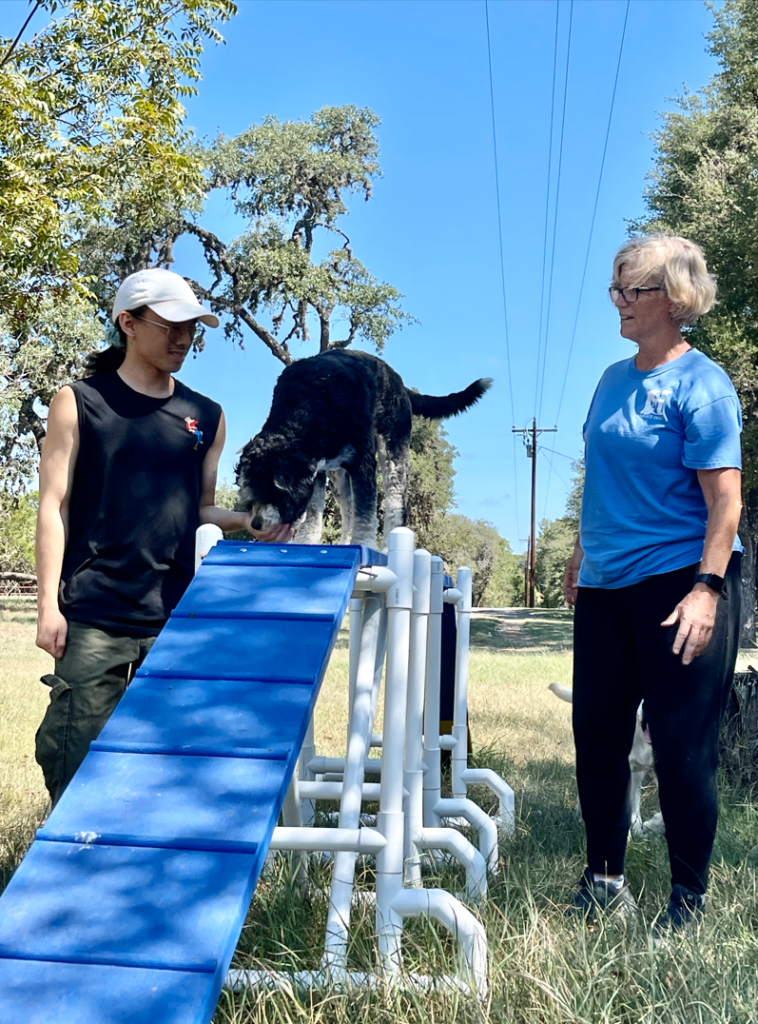
Tell us a little about your dog training philosophy, and what you feel is most important when working with pet dog clients.
My goal in working with pet clients is helping them communicate with their dog in a manner that builds trust and respect. We accomplish this by using all four quadrants of operant conditioning in the appropriate situations.
How have you enjoyed being part of the Highland Canine team for the past couple of years? What do you believe separates Highland from its competitors?
When I was attending the Master Dog Trainer course I used the hashtag #mydisneyland to describe my time there! The curriculum, the staff, the owners, the dogs, were all amazing!
To be a part of this team feels pretty awesome! I think what makes Highland a cut above is it is run by people that love what they do. It isn’t “just a job.” They embrace their staff and students as part of the family.
Tell us a little bit about the new Hill Country Campus, and what motivated you to get into teaching the next generation of service dog trainers.
The Hill Country Campus is in Utopia, TX. Our first class started August 7th 2023. I had held a few week-long “Cain9 Camps” over the past few summers, and absolutely love sharing what I’ve learned about dogs. More importantly, I love watching the campers – and now students – apply the information and accomplish a goal with their dog!
There is a huge demand for service dogs, but not enough trainers to meet the need. Training a service dog takes knowledge, patience, time, and the right trainer. This campus is going to put out some amazing service dog trainers!
What will service dog trainers learn at the School for Dog Trainers, and what separates this program from similar ones?
Students attending the Service Dog Trainer program at the Texas Hill Country Campus can expect an environment where learning is collaborative and fun. The curriculum encourages discussion and sharing of ideas and experiences. Students can expect to work with a variety of different breeds and temperaments. They’ll begin to build an understanding of how dogs communicate with each other and they’ll learn different ways they can communicate with dogs. The melding of classroom learning and hands-on training will build their knowledge, skill, confidence and ultimately help them find their path to becoming the best canine communicator they can be!
There are a lot of things that sets our curriculum apart from other schools. I think the most important difference would be that other schools have a specific, or one lane, training approach. “Do things this way, any other way is incorrect.” Some schools don’t allow treats; some schools don’t allow prong collars or e-collars.
We approach our teaching from the perspective that all dogs are not the same, therefore, not all training is the same for each dog. Some dogs work for food, some work for a toy, some work because they want your attention. We teach the trainers to consider the breed, temperament, health (both mental and physical), and history of the dog to help them determine the best training plan.
Our students will learn a variety of tools, theories and techniques and leave our School with the knowledge and experience having used them. When they start their own business, they will have a deeper bag of tools. Which tools they use will be 100% up to them.
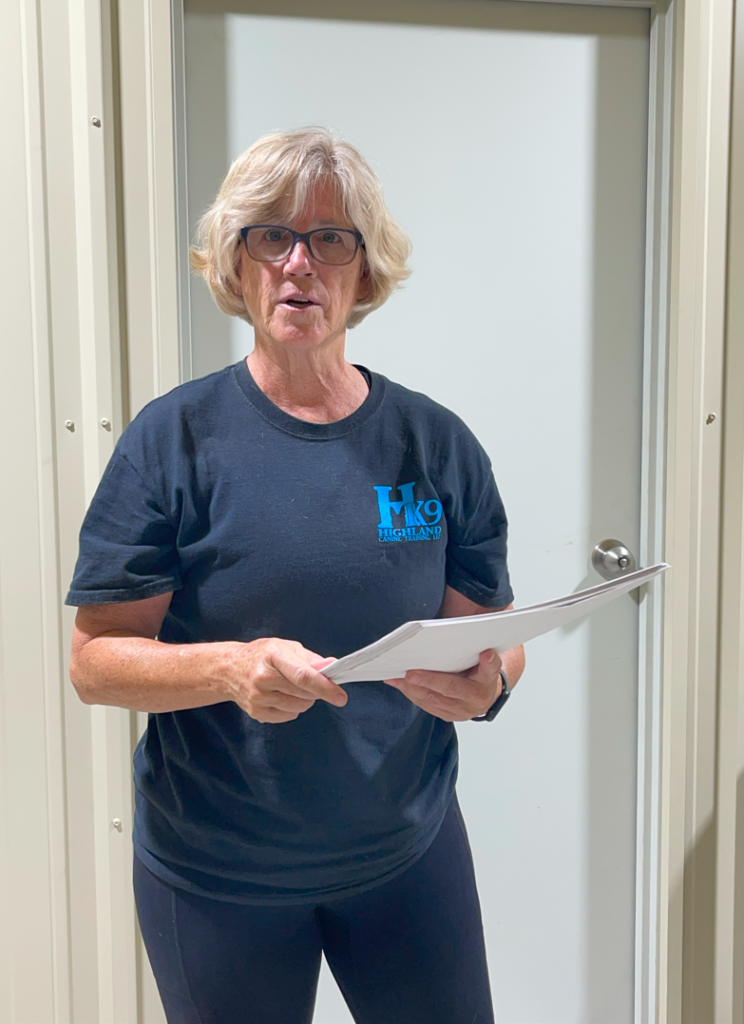
Why do you believe it is important for the service dog community to have service dog trainers who have gone through the program at the School for Dog Trainers?
The last statistics I read stated that 50%-70% of dogs that enter a Service Dog training program wash out or are returned. I wonder if that statistic could be changed based on the skillset of the trainers. Training a Service Dog isn’t to be taken lightly. Granted, it is a fun and rewarding job, but it is also serious business. Service Dogs are not pets; they are working dogs. In many cases, they are relied upon to alert or indicate when someone needs medical intervention. It may be dramatic to say they save lives – but they do.
If a service dog trainer doesn’t have an understanding on how dogs learn when they hit a bump in the road, they may toss in the towel and wash the dog out of the program. However, with a solid foundation of lessons and hands-on work, the bump in the road will bring out the ability of a good trainer to troubleshoot and find a solution.
I have also encountered ‘service dogs’ that failed when they were needed because the trainers didn’t understand the proofing phase of the dog’s training. Good service dog trainers never stop researching, learning, sharing and trying new things.
Related posts
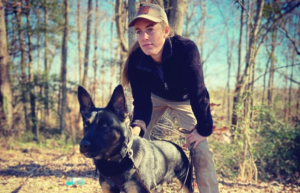
Featured Employee: Amber Vaughn
Amber Vaughn has been a key member of our team for a number of years. Go behind-the-scenes as she takes part in this quickfire Q&A!
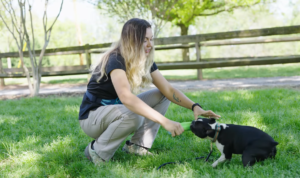
Highland Canine Training Launches New Location In Cleveland, OH
Emma Stowe will offer professional dog training services in the Cleveland area.
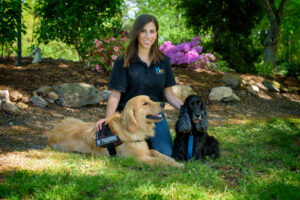
“All Dogs Need A Purpose”: Our Mérida Dog Trainer Explains Her Journey
Recently, Highland Canine Training launched a new dog training location in Mérida, Mexico. In this article, our Mérida trainer, Alejandra Vázquez Bracho Illescas, explains her journey to becoming a dog trainer.


You must be logged in to post a comment.